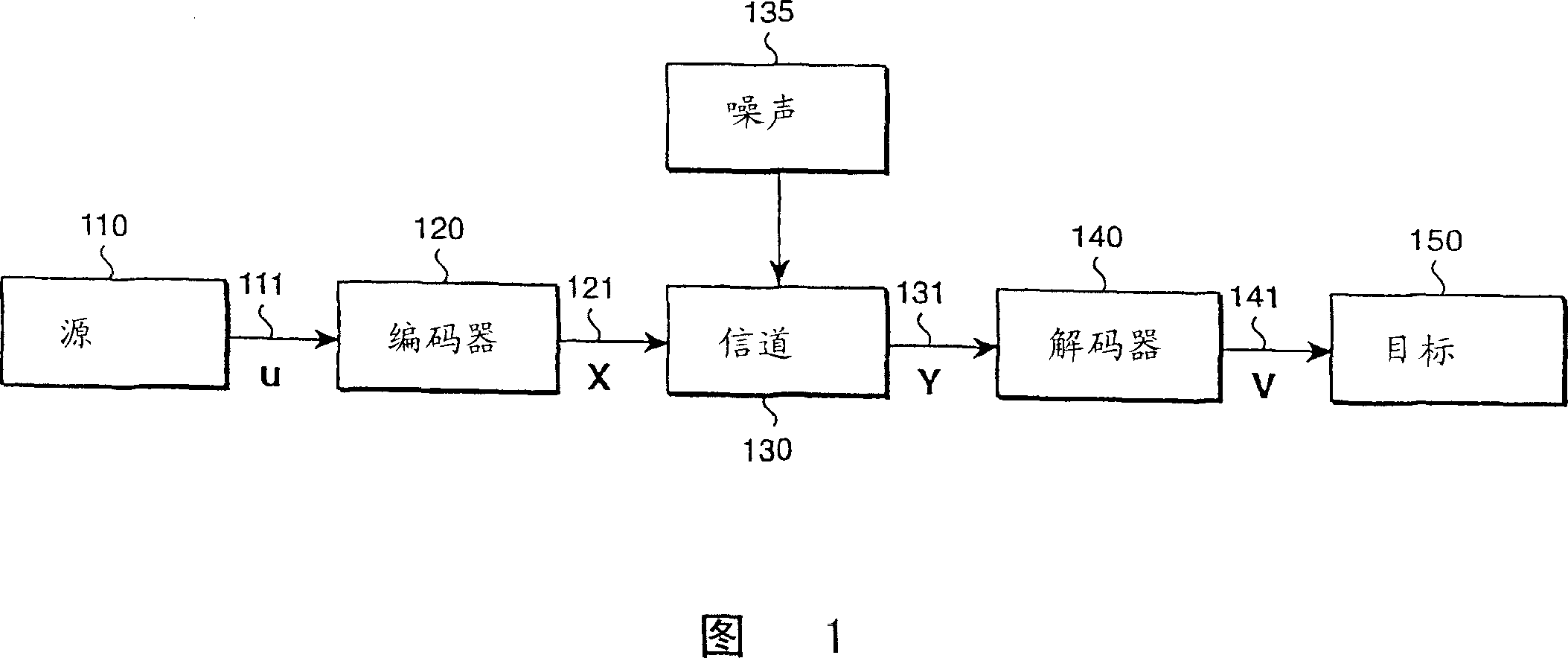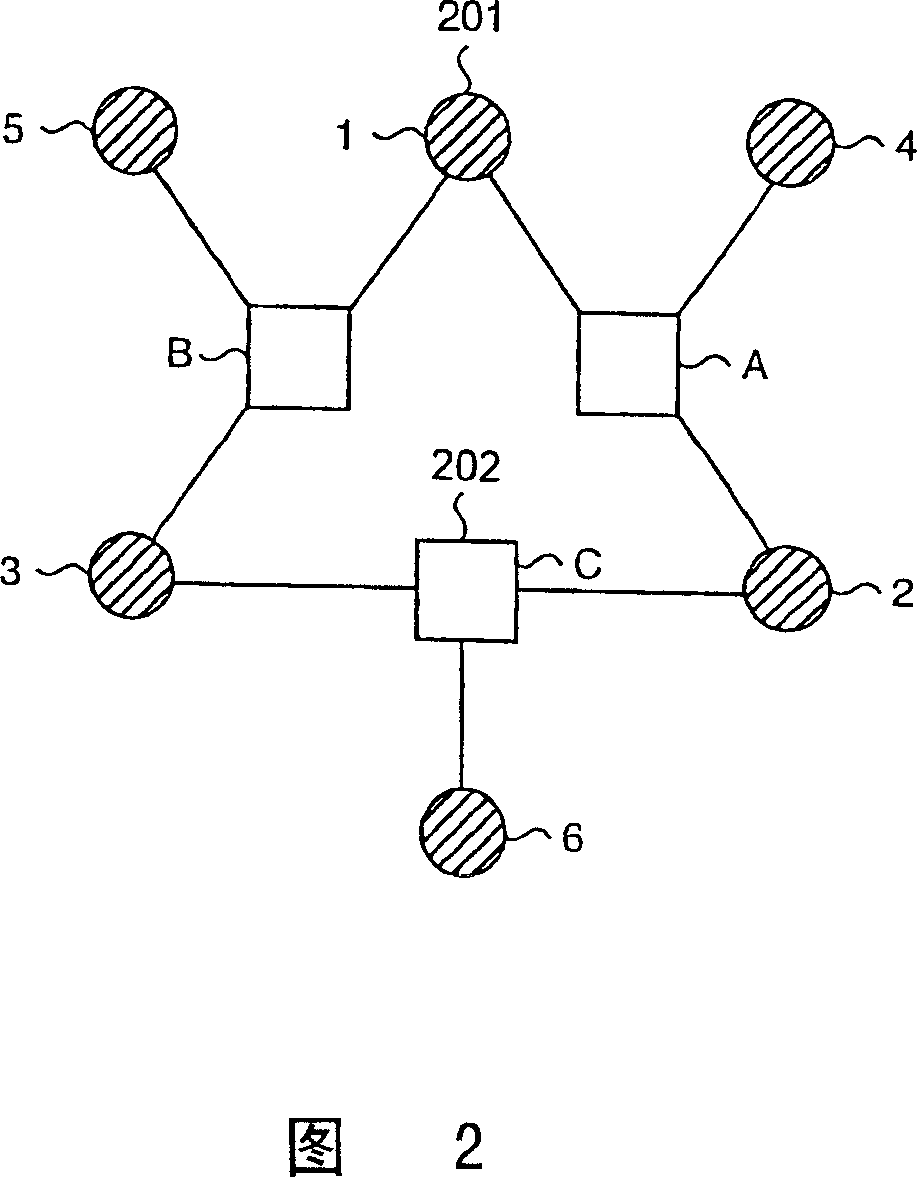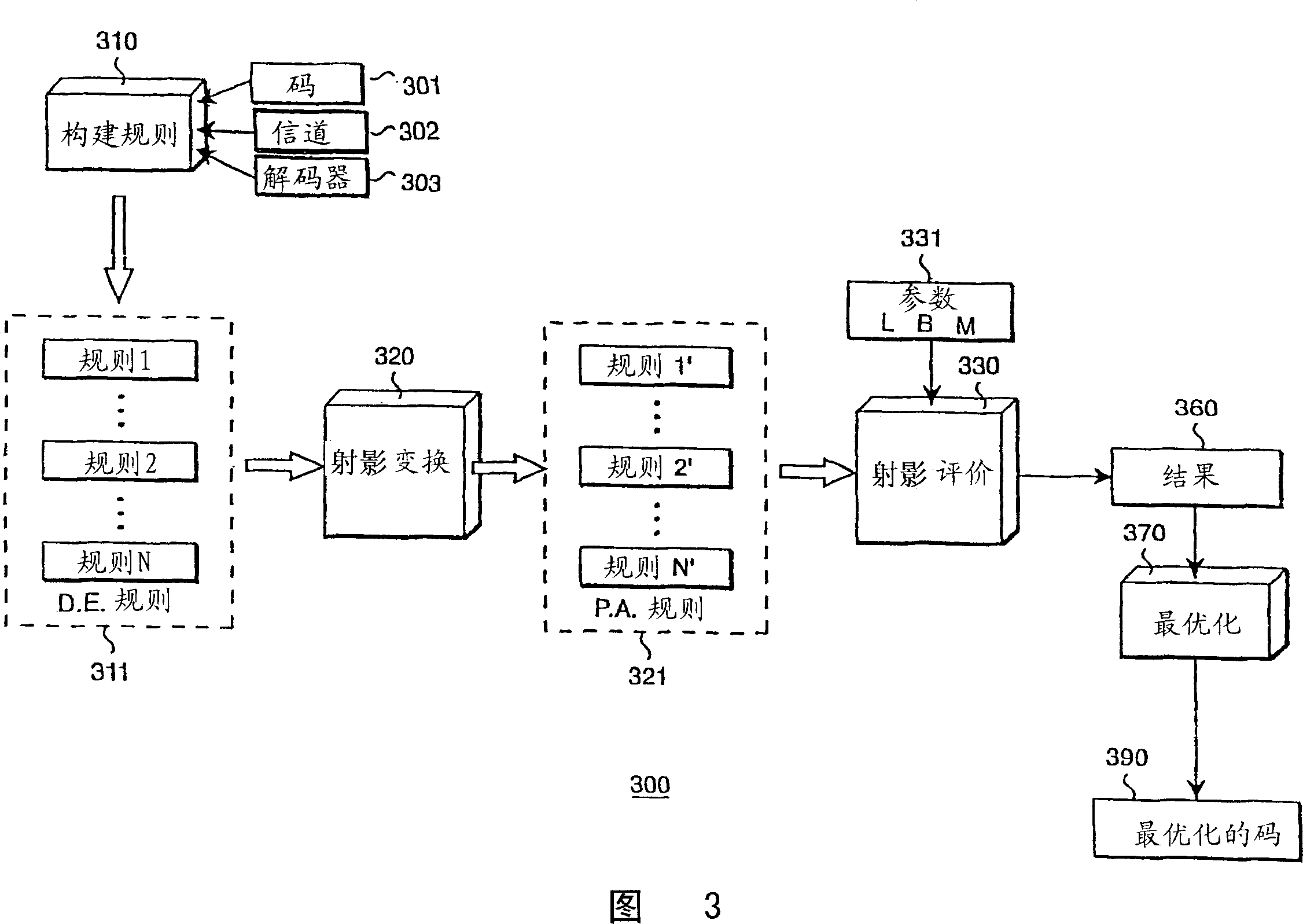Evaluating and optimizing error-correcting codes using projective analysis
An error-correcting code and optimization technology, applied in the field of error-correcting codes, can solve problems such as poor real performance
- Summary
- Abstract
- Description
- Claims
- Application Information
AI Technical Summary
Problems solved by technology
Method used
Image
Examples
Embodiment Construction
[0110] The present invention evaluates the performance of error correcting codes (ECCs) that are decoded by a message passing decoding process where each message can be in a finite number of different discrete states. At each iteration of the decoding process, the method keeps track of the probability that each message sent by the decoding process is in any of its possible states. In contrast to prior art density evolution methods, the present method is accurate for any code represented by a parity check matrix, including bipartite graph representations containing cycles (loops).
[0111] In contrast to prior art density evolution methods which use real numbers to represent probabilities, the present method represents each probability of interest with a "projective polynomial". By projecting polynomials, we have x i to represent polynomials in the form of , where no term of the polynomial has an exponent of order greater than one.
[0112] Also, operations on projective poly...
PUM
 Login to View More
Login to View More Abstract
Description
Claims
Application Information
 Login to View More
Login to View More - R&D
- Intellectual Property
- Life Sciences
- Materials
- Tech Scout
- Unparalleled Data Quality
- Higher Quality Content
- 60% Fewer Hallucinations
Browse by: Latest US Patents, China's latest patents, Technical Efficacy Thesaurus, Application Domain, Technology Topic, Popular Technical Reports.
© 2025 PatSnap. All rights reserved.Legal|Privacy policy|Modern Slavery Act Transparency Statement|Sitemap|About US| Contact US: help@patsnap.com



